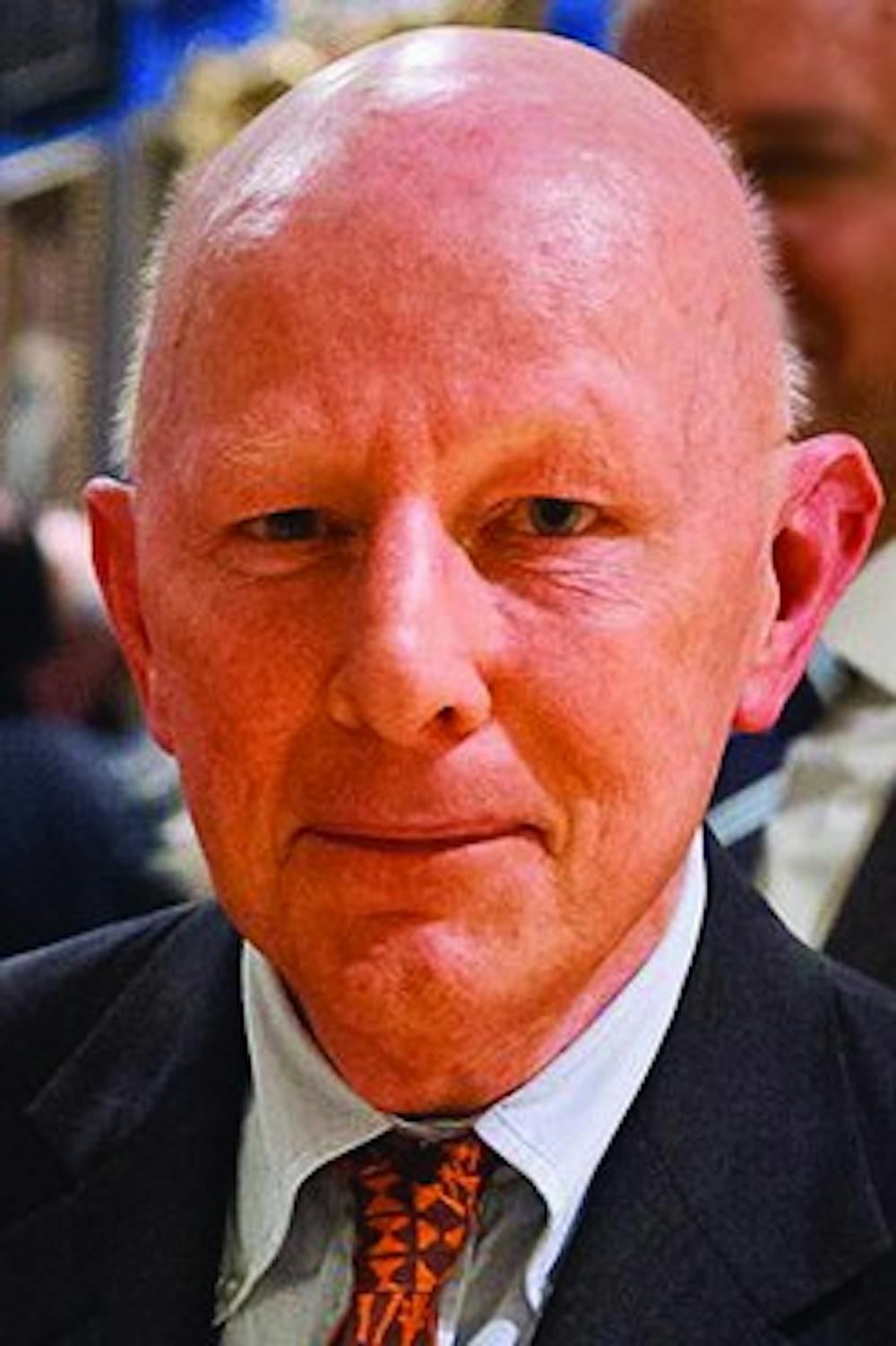Renowned New York Times art critic Holland Cotter spoke at the University March 23 about art within the context of activism, historical canons and his general experiences.
A childhood filled with diverse perspectives offered Cotter a unique opportunity to delve into the arts at an early age and ultimately acknowledge the huge range of possibilities art provides, particularly across various cultures.
Cotter stressed that multiculturalism is one of his major focuses. He grew up in an open-minded family that exposed him to numerous forms of art and culture. For example, he was introduced to Emily Dickinson’s poems at the dinner table when he was five-years-old.
Part of Cotter’s life and experience as an art critic has revolved around education. He described a college anthropology course on primitive art he took which was interactive, engaging and both thought- and action-provoking.
“That was the beginning of my adult education period,” Cotter said.
He actively pursued knowledge and allowed his curiosity to rule many of his decisions past his formal education. In Cotter’s opinion, people should learn for the sake of learning in order to expand their minds whenever they can, he said Cotter found his passion and ran with it — not because someone forced him to, but because that was what he genuinely wanted to do. Cotter said he is still learning and pursuing art and education with an insatiable desire.
“I don’t know enough,” he said. “My most important teaching just happened to me, and I was in the right state of mind to receive it.”
Art can be a powerful tool to teach — inciting and providing a vessel for activism and empowerment. It is everywhere and can provide a voice for those who don’t have one.
“Art is where the moral voice speaks when it can speak no where else,” Cotter said.
He listed the Women’s March as an example of performance art. Events such as this — which utilize art or an artistic style — provide a venue to express opinions and demonstrate a nonconformity to certain stances and stereotypes. These events are also spaces to address serious issues many people would rather ignore or pretend are not problems at all. They show there is so much work to be done in our society and individual communities, Cotter said.
He also discussed art during the AIDS epidemic.
“Some extraordinary art emerged as a result of these realities,” Cotter said said in reference to AIDS-inspired work.
Many art pieces of that time and in most art eras serve to provoke and challenge. All art forms are not necessarily meant to please or to soothe. Art is made to elicit emotion, positive or negative — any response can be an effective response.
“Art is not intrinsically benign,” Cotter warned.
While art can be risky, Carter said it is about respecting others and learning deeply about different people and cultures. As an art critic, Cotter is intrigued by non-Western art especially, a rather underrepresented part of the art canon. This is his way of sparking his creative energy and connecting with the world, he said.
Cotter emphasized he does not collect art, though.
“There’s something in me that isn’t an object person … I accumulate many, many, many books. It’s not a collection — it’s an accumulation,” Cotter said.
Though he describes it as an object in the previous quote, Cotter also implies art can move beyond being a simple object and become more action-driven and action-driving. For him, at least, art and art criticism have provided the means to do what he loves — bring attention to new types of art and share his passions with others.







